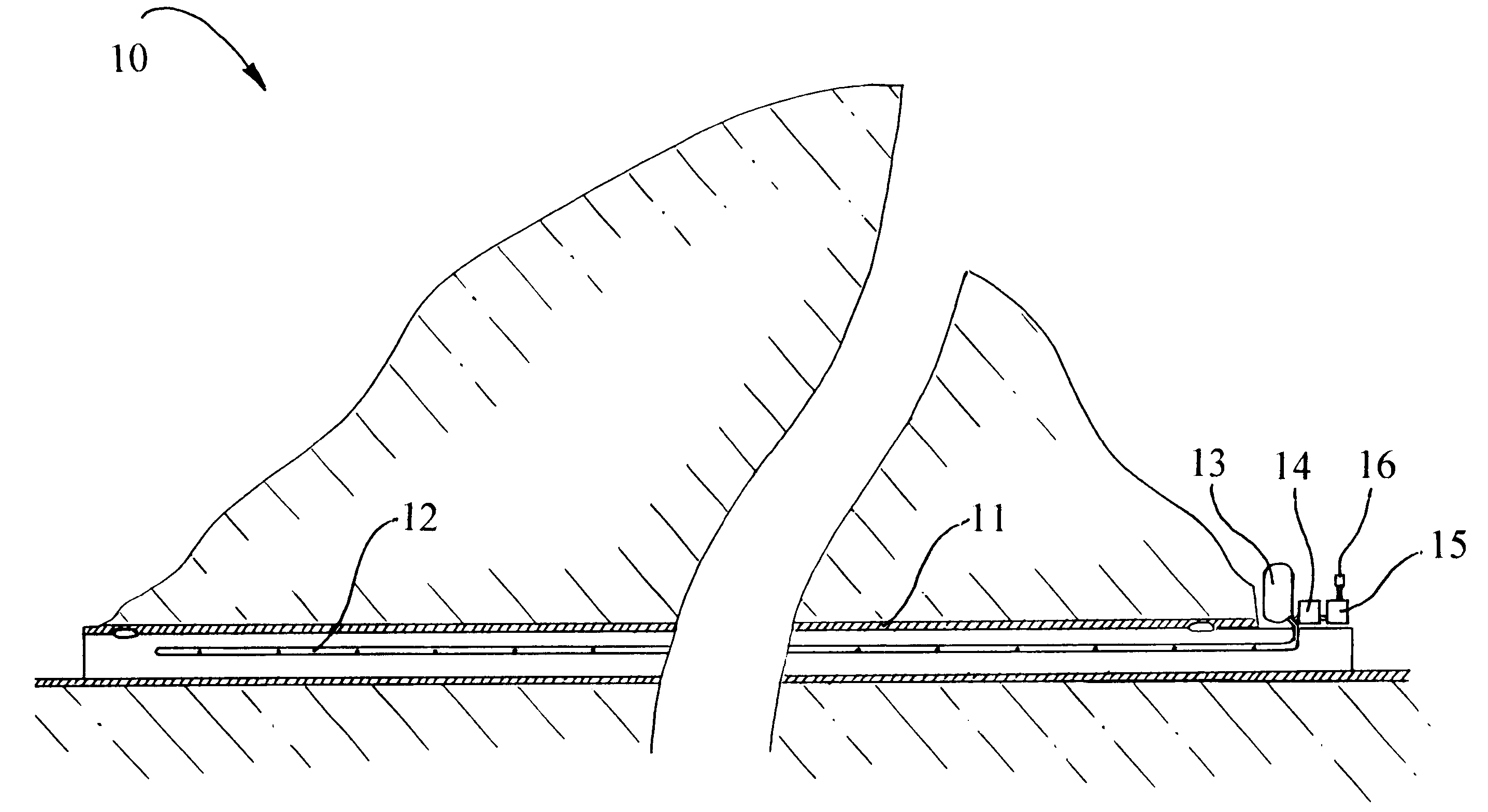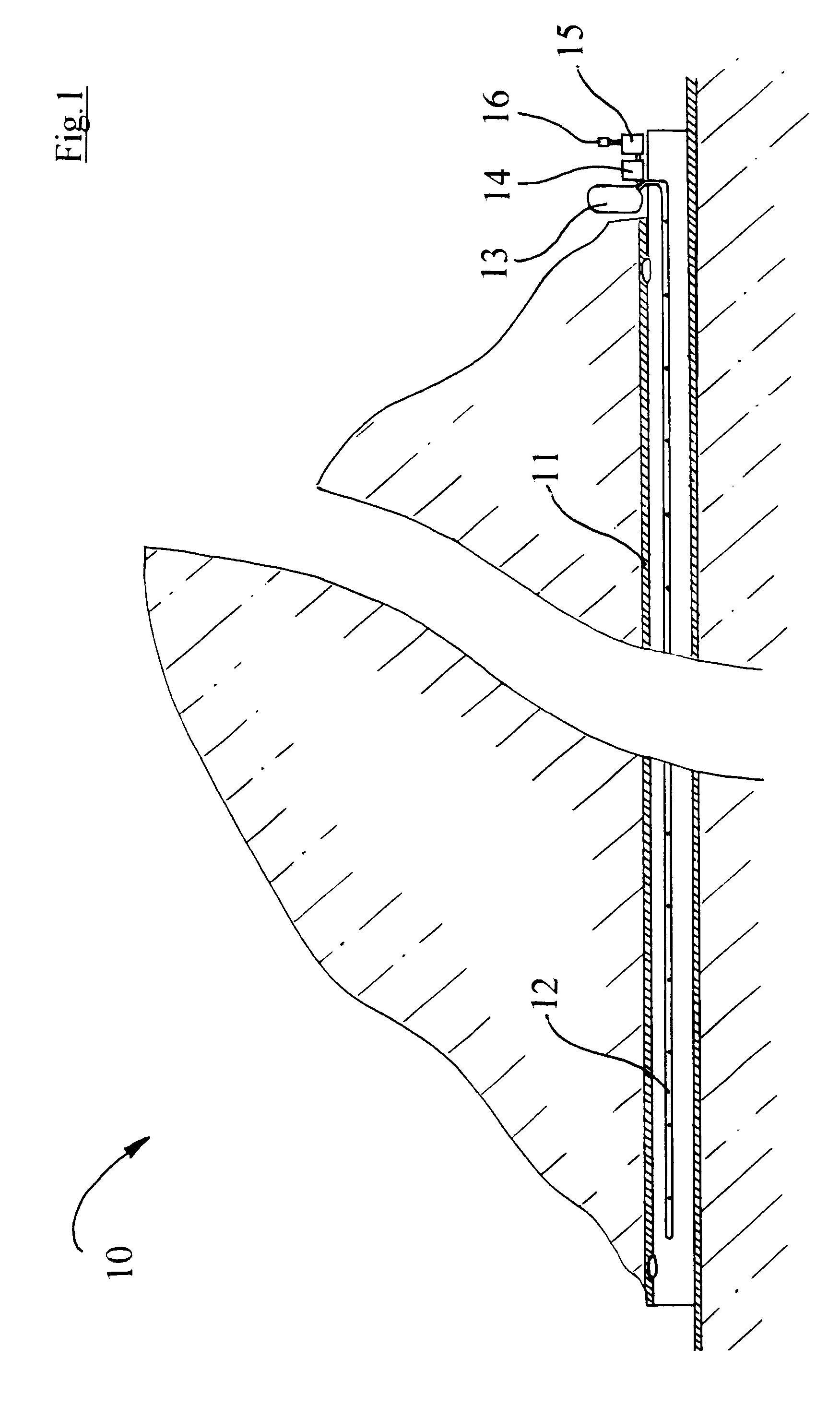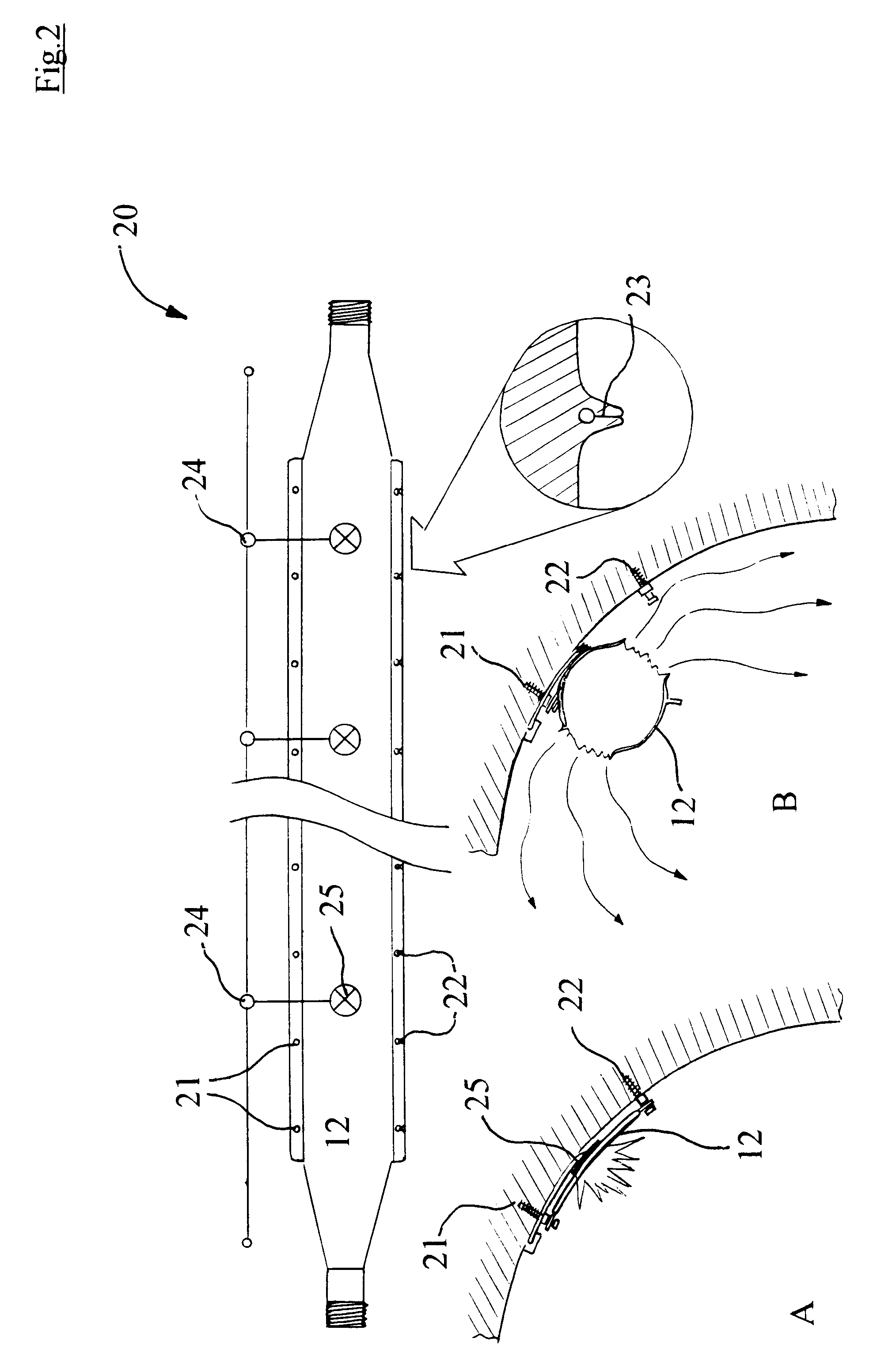Tunnel fire suppression system and methods for selective delivery of breathable fire suppressant directly to fire site
a technology of fire suppression system and tunnel, applied in the direction of liquefaction, chemical/physical processes, dentistry, etc., can solve the problems of significant initial structural damage, unprepared emergency services and authorities, and relatively uncomplicated to organize and carry out such attacks
- Summary
- Abstract
- Description
- Claims
- Application Information
AI Technical Summary
Benefits of technology
Problems solved by technology
Method used
Image
Examples
Embodiment Construction
This invention is based on the Phenomenon of Ignition Suppression and Combustion Elimination in hypoxic breathable air and the Hypoxic Fire Prevention and Suppression System (FirePASS.TM.), being described in previous patent applications.
FIG. 1 presents a schematic view of the first preferred embodiment 10 of the Hypoxic Tunnel Fire Suppression System (HTFSS) that is most suitable for automobile and railroad tunnels, mines and underground facilities. The system can be also used in different types of buildings, especially of expanded shape, like the Pentagon building near Washington D.C., having many miles of corridors and underground passageways.
A tunnel 11 having a gas-distribution hose 12 for selective delivery of hypoxic fire suppressant to any part of the tunnel 11. Hose 12 is connected, via a release valve, to a gas storage container 13 holding the fire-suppressive composition under high pressure and communicating with a high-pressure compressor 14 and hypoxic generator station...
PUM
| Property | Measurement | Unit |
|---|---|---|
| diameter | aaaaa | aaaaa |
| pressure | aaaaa | aaaaa |
| section area | aaaaa | aaaaa |
Abstract
Description
Claims
Application Information
 Login to View More
Login to View More - R&D
- Intellectual Property
- Life Sciences
- Materials
- Tech Scout
- Unparalleled Data Quality
- Higher Quality Content
- 60% Fewer Hallucinations
Browse by: Latest US Patents, China's latest patents, Technical Efficacy Thesaurus, Application Domain, Technology Topic, Popular Technical Reports.
© 2025 PatSnap. All rights reserved.Legal|Privacy policy|Modern Slavery Act Transparency Statement|Sitemap|About US| Contact US: help@patsnap.com



